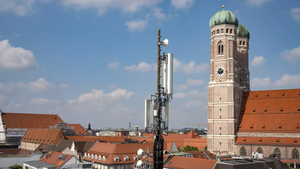DOCSIS 4.0 gaining traction with cable ops – survey
ATX's annual survey of industry execs across 60 cable operators found that 48% of them intend to activate DOCSIS 4.0 in their HFC networks before the end of 2025.

With access to a variety of options, cable operators are choosing their own adventure on access network upgrades. Some are biting the bullet and overlaying their networks with all-fiber PON technologies. Many others intend to squeeze all they can out of their widely deployed hybrid fiber/coax (HFC) networks by enhancing their existing DOCSIS 3.1 networks or by upgrading to DOCSIS 4.0.
But it's becoming increasingly clear that a sizable group of cable operators, particularly those concentrated in North America, plan to pivot to DOCSIS 4.0. Examples of large and midsized operators already plowing ahead with D4.0 or placing it on their roadmaps in some shape or form include Comcast, Charter Communications, Cox Communications, Rogers Communications, Cable One and Mediacom Communications.
And that activity and interest is clearly reflected in a new industry survey from ATX Networks finding that nearly half (48%) of all respondents intend to activate DOCSIS 4.0 in their HFC networks before the end of 2025. Just 15% said they had no plans to pull the trigger on DOCSIS 4.0.
Figure 1:  Click here for a larger version of this image.
Click here for a larger version of this image.
(Source: ATX Networks 2050 Project Survey; Charting the HFC Evolution: 2023 edition. Used with permission)
Those findings seem to match up with Omdia's recent survey of 60 operators across five regions. Omdia's survey found that 32% expected to start deploying DOCSIS 4.0 within 12 months, and 46% said they expected to do so within 24 months.
ATX, a supplier of amplifiers, taps and other outside plant gear that stands to benefit from such upgrades, said it based its latest 2050 Project Survey on responses from 81 cable industry professionals representing more than 60 companies. The majority of them (75%) were based in North America, compared to 4% in Europe, the Middle East and Africa, 15% in the Caribbean/Latin America and 6% in the Asia-Pacific.
ATX's survey also shed some light on the version of D4.0 operators intend to adopt. Some 43% said they intend to use the Extended Spectrum DOCSIS (ESD) option (also known as Frequency Division Duplexing, or FDD), which envisions spectrum upgraded to 1.8GHz while keeping the upstream and downstream running in dedicated spectrum. By comparison, 16% said they are most likely to adopt Full Duplex DOCSIS (FDX), an option largely favored by Comcast that allows upstream and downstream traffic to operate simultaneously in a block of spectrum.
Operators gravitating to the FDD version of D4.0 jumped 20% since ATX's inaugural survey in 2021. "Most of that gain for FDD appears to have come from the Unsure segment, which would suggest that MSOs that may have been on the fence over which flavor to adopt have settled on a direction as DOCSIS 4.0 readiness approaches," ATX reckoned.
DAA buildouts in motion
This year's survey was ATX's first to focus on operator plans for a distributed access architecture (DAA), a prerequisite for DOCSIS 4.0 network upgrades. More than half (51%) said they expected to convert at least half their HFC plant to DAA between 2023 and 2025, and just 1% said they would get that far sometime beyond 2023. About 5% said they had already achieved that level of DAA rollout.
Figure 2:  Click here for a larger version of this image.
Click here for a larger version of this image.
(Source: ATX Networks 2050 Project Survey; Charting the HFC Evolution: 2023 edition. Used with permission)
Operators were also asked to take a stab at the hurdles they face upgrading HFC networks to stay ahead of customer demands and competition. Forty-one percent cited availability of "suitable technology" as the primary challenge, compared to supply chain issues (28%) and financial/funding issues (18%). Surprisingly, just 12% cited labor shortages as the highest hurdle.
Getting more out of DOCSIS 3.1
The survey also asked how operators plan to boost upstream traffic on their existing DOCSIS 3.1 networks. About 43% said they would beef up the upstream with a "mid-split" that expanded the upstream spectrum range to 5MHz-85MHz (compared to a legacy "low-split" range of 5MHz-42MHz), and 41% would go with a "high-split" that increases that range to 5MHz-204MHz. ATX speculated that operators are giving a small edge to mid-splits because the move is less operationally disruptive than high-splits that might require them to replace outside plant components
That activity also ties into questions about how much runway DOCSIS 3.1 networks will provide in the coming years based on anticipated network demand. Some 49% said they'd expect a D3.1 network paired with a mid-split to give them another three to five years before having to execute a high-split upgrade or evolve to DOCSIS 4.0. About 7% believe that DOCSIS 3.1 with a mid-split would give them a runway of 11 to 15 years.
Figure 3:  Click here for a larger version of this image.
Click here for a larger version of this image.
(Source: ATX Networks 2050 Project Survey; Charting the HFC Evolution: 2023 edition. Used with permission)
Related posts:
— Jeff Baumgartner, Senior Editor, Light Reading
About the Author(s)
You May Also Like


.jpg?width=300&auto=webp&quality=80&disable=upscale)









